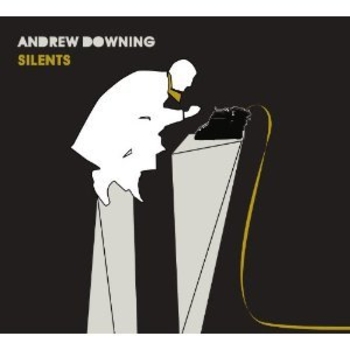
The inspiration for this post was our theme last week on Star Maker Machine, Instrumentals. At the end of the week, I still had instrumental songs I wanted to share. So I decided to gather a few of them up, and put them here. Then things got interesting. As I selected the songs for this post, I realized that there was more to my theme. The term “fusion” was applied to jazz music that used electric instruments, starting in the 1970s. The starting point for this music was Miles Davis’ masterpiece, Bitch’s Brew, but the music went down hill from there. Eventually, the label “fusion” acquired a bad name among jazz afficianados. Kenny G would be the prime example of everything that was wrong about fusion jazz. The short answer was that it wasn’t jazz any longer, and I agree. I might call the music of Kenny G and the like instrumental pop.
Having said that, let’s back up. The word fusion simply means that two or more unlike things have been combined. Sometimes in music, this combination sounds like the result of a violent collision, with parts flying everywhere. But there are other times when a true fusion occurs, and two or more styles of music that should not fit together do. And that’s the kind of music I found myself being drawn to for this post. So here are the results.
Buckshot LeFonque: Jungle Grove
[purchase]
Branford Marsalis is a great jazz sax player. His brother, Wynton, is known for his zealous adherence to the purity of jazz in his work. But Branford is another matter. He has worked with Sting and other pop artists, and Branford is not afraid to push the boundaries of musical genres in his own work. Buckshot LeFonque was a side project that Branford Marsalis worked on for all of two albums during the 90s.
Jungle Grove starts out sounding like straight ahead jazz. The bass and horns get a groove going, and it cooks. But then the drums and percussion enter. The style they play is an offshoot of hip-hop called jungle music. And the combination works! Buckshot LeFonque was all about combining jazz and hip-hop, and the results, with and without vocals, were wildly uneven. But Jungle Grove points the way to further exploration.
Yeska: Skaliente
[purchase]
Latin jazz is already a fusion form. Jazz meets the traditional rhythms of Latin America, and the result has been thoroughly road tested by now. Yeska combines this with ska. They do this so well that the combination seems obvious. The key is not to force it. The ska beat comes and goes within each song, and is never quite gone. If you keep that beat in your head as you listen, you will hear where it went.
Jon Hassell: Sundown Dance
[purchase]
For Jon Hassell, all the music the world has ever made is fair game. I’m not even sure what is being fused here, only that I like the results. I first noticed Jon Hassell playing trumpet on Talking Heads’ album Remain in Light. Nothing sounds like what I think of as a trumpet, but it’s right there in the credits. So what’s going on here?
In time, I found out. Hassell processes the sound of his trumpet through electronic filters. The resulting sound is what you hear starting at about the 1:40 mark of Sundown Dance. In his own music, he plays this over a stew of musical sounds from all over the world. Always, there is a pulse. The result is hypnotic, and excellent for meditation, but also just for listening. Maybe this music is jazz, but of a very unusual sort.
D‘Gray: Vavarano
[purchase]
Henry Kaiser and David Lindley once made a trip to Madagascar, and recorded the music they found there. Madagascar is home to many plants and animals that are found nowhere else in the world, and the same is true of its musical instruments. One of the songs the songs that Kaiser and Lindley recorded on that trip was this one. Vavarano is a traditional song; the fusion element is that it is not usually played on acoustic guitar, as D’Gray does here. Elsewhere on this album, many of the native instruments can be heard. Playing this on acoustic guitar gives the song a completely different feel, and a beautiful one it is.
Spotlight Song of the Week:
Andrew Downing: Hospital
[purchase]
Andrew Downing is a classically trained cellist and composer who has played in a rock band, as well as in jazz ensembles and groups that played gypsy music. For the last few years, Downing has received commissions to create new music for classic silent films. The album Silents collects music from two of these scores, Impossible Voyage and The Cabinet of Dr Caligari. Downing uses a consistent ensemble for these film works, and it includes an unusual combination of instruments. Here is a string quartet, plus clarinet, bassoon, trumpet, trombone, guitar, melodica, celeste or harmonium, and percussion.
Classical music unfolds gradually, with subtle changes in mood over an extended time period, compared to the music I usually cover. But Downing doesn’t have time for that here. This music must follow the needs of the action in the films. So there are subtle shifts in mood and even instrumentation, but they must happen fairly quickly. Sometimes, these shifts are abrupt, as is the action on the screen. But the album is divided into songs that, I imagine roughly correspond to scenes. I have not seen the films involved, so I can report on this album purely as a work for listening. I understand why the music sounds this way, but, out of context, I find this to be a very enjoyable listen.






1 comments:
I think you mean D'Gary, not D'Gray. In either case, his guitar-work is quite amazing. He recorded solo and with another Malagasy guitarist; Dama. Both are worth looking into. - Rich
Post a Comment